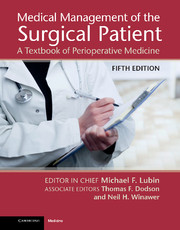Book contents
- Frontmatter
- Dedication
- Contents
- List of Contributors
- Preface
- Introduction
- Part 1 Perioperative Care of the Surgical Patient
- Part 2 Surgical Procedures and their Complications
- Section 17 General Surgery
- Section 18 Cardiothoracic Surgery
- Section 19 Vascular Surgery
- Section 20 Plastic and Reconstructive Surgery
- Section 21 Gynecologic Surgery
- Section 22 Neurologic Surgery
- Section 23 Ophthalmic Surgery
- Chapter 108 General considerations in ophthalmic surgery
- Chapter 109 Cataract surgery
- Chapter 110 Corneal transplantation
- Chapter 111 Vitreoretinal surgery
- Chapter 112 Glaucoma surgery
- Chapter 113 Refractive surgery
- Chapter 114 Strabismus surgery
- Chapter 115 Enucleation, evisceration, and exenteration
- Section 24 Orthopedic Surgery
- Section 25 Otolaryngologic Surgery
- Section 26 Urologic Surgery
- Index
- References
Chapter 110 - Corneal transplantation
from Section 23 - Ophthalmic Surgery
Published online by Cambridge University Press: 05 September 2013
- Frontmatter
- Dedication
- Contents
- List of Contributors
- Preface
- Introduction
- Part 1 Perioperative Care of the Surgical Patient
- Part 2 Surgical Procedures and their Complications
- Section 17 General Surgery
- Section 18 Cardiothoracic Surgery
- Section 19 Vascular Surgery
- Section 20 Plastic and Reconstructive Surgery
- Section 21 Gynecologic Surgery
- Section 22 Neurologic Surgery
- Section 23 Ophthalmic Surgery
- Chapter 108 General considerations in ophthalmic surgery
- Chapter 109 Cataract surgery
- Chapter 110 Corneal transplantation
- Chapter 111 Vitreoretinal surgery
- Chapter 112 Glaucoma surgery
- Chapter 113 Refractive surgery
- Chapter 114 Strabismus surgery
- Chapter 115 Enucleation, evisceration, and exenteration
- Section 24 Orthopedic Surgery
- Section 25 Otolaryngologic Surgery
- Section 26 Urologic Surgery
- Index
- References
Summary
Traditional full-thickness corneal transplantation, known as penetrating keratoplasty (PK), was first performed over a century ago and remains the gold standard of corneal transplantation. Penetrating keratoplasty involves replacement of all layers of the central 7–9 mm of the host cornea with allograft tissue, usually derived from eye banks. Donor corneas are harvested from 1–2 weeks prior to transplantation. Tissue or blood typing is not routinely done. The overall optical clarity, integrity of donor tissue, and donor endothelial cell density are evaluated at the eye bank. The tissue is screened for multiple infectious diseases of the donor, a procedure commonly performed for other human allograft tissues.
Penetrating keratoplasty
Penetrating keratoplasty usually begins with the removal of the diseased central host cornea by use of various forms of trephine. Next, the donor tissue is trephinated from the donor corneal tissue and is usually slightly oversized. The donor tissue is secured in the recipient bed using either interrupted or continuous nylon sutures. When necessary, a cataract extraction may be performed in combination with intraocular lens implantation. Monitored anesthesia care in these cases usually includes brief, intravenous sedation combined with a retrobulbar block. General anesthesia may be required for selected patients unable to be cooperative, such as children or anxious adult patients. Total surgical time is around 30–45 minutes for an experienced surgeon. Corneal graft survival at 1 year is 90% for PK. Indications for PK include haze, ectatic disease, opacities in the cornea, and corneal edema causing decreased vision or pain. In addition, infections, scars, trauma, congenital dystrophies, and corneal decompensation or injury from prior intraocular surgery are also indications.
- Type
- Chapter
- Information
- Medical Management of the Surgical PatientA Textbook of Perioperative Medicine, pp. 698 - 699Publisher: Cambridge University PressPrint publication year: 2013

